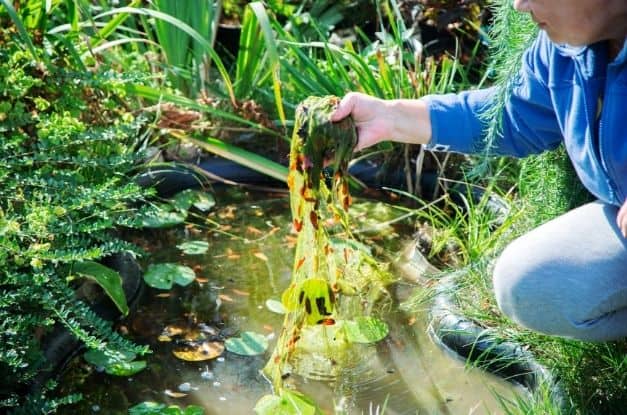Algae is one of the most annoying problems for pond owners, let alone senior pond owners who are no longer able to dedicate as much time to skimming and treating the water. Luckily, you don’t have to just sit back and watch the blooms take over your pond this fall. Here are some tips on how to combat algae growth in a residential pond that don’t involve daily maintenance.
Invest in an Aerator
Though you would need to either install the aerator yourself or have a service team help you, adding an aerator to your pond is well worth the effort it entails. Aerator systems introduce oxygen into the water that breaks up sludge and encourages movement in the water.
Algae thrive when nothing else is present to consume the nutrients they need in the water, so bringing more oxygen into the water will allow healthy bacteria to take over and compete with the algae for nutrients.
Add More Shade
One quick and painless way to limit algae growth in your backyard pond is to take away the direct sunlight that algae rely on. Patio sunshades can do a great job of this while also providing a more comfortable place for you and your loved ones to relax.
If you don’t want to cover the pond itself, covering the water’s surface is also an easy option. Water lilies and duckweed both shade the pond while adding to its natural beauty. Bringing new plants into the picture also brings in more competition for nutrients and limits algae success.
Prepare for the Season
If you make a habit of stepping outside to enjoy the pond and feed the fish who call it home every day, you could accidentally be encouraging algae growth. As the temperature cools down in the fall, your fish will eat less of the food given to them, as their metabolism slows down. This is perfectly natural for them, but the uneaten food will just turn into waste and create an unhealthy pond.
Keep an eye on your pond through the fall and adapt to the season’s effect on your pond. Start with feeding your fish less as temperatures go beneath 60 degrees. While this may not immediately affect algae present, it will help prevent further blooms next summer.
If you’re struggling to prevent algae growth in a residential pond on your own, don’t hesitate to ask neighbors or family members for help. You’ve put in the effort to maintain your pond for years; there’s no reason you can’t continue to enjoy it now that you’re older.






